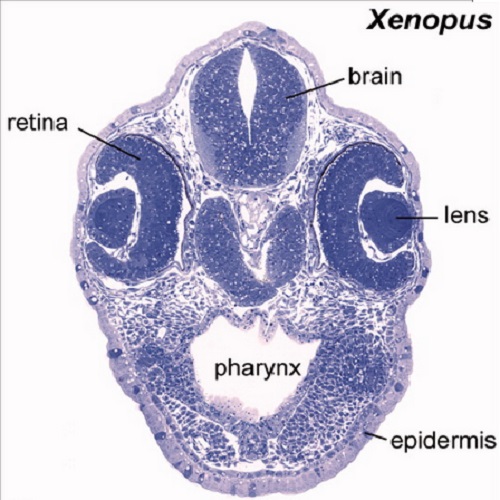Histology of plastic embedded amphibian embryos and larvae.
Amphibians including the South African clawed frog Xenopus laevis, its close relative Xenopus tropicalis, and the Mexican axolotl (Ambystoma mexicanum) are important vertebrate models for cell biology, development, and regeneration. For the analysis of embryos and larva with altered gene expression in gain-of-function or loss-of-function studies histology is increasingly important. Here, we discuss plastic or resin embedding of embryos as valuable alternatives to conventional paraffin embedding. For example, microwave-assisted tissue processing, combined with embedding in the glycol methacrylate Technovit 7100, is a fast, simple, and reliable method to obtain state-of-the-art histology with high resolution of cellular details in less than a day. Microwave-processed samples embedded in Epon 812 are also useful for transmission electron microscopy. Finally, Technovit-embedded samples are well suited for serial section analysis of embryos labeled either by whole-mount immunofluorescence, or with tracers such as GFP or fluorescent dextrans. Therefore, plastic embedding offers a versatile alternative to paraffin embedding for routine histology and immunocytochemistry of amphibian embryos.

- Genesis 2012 Mar 27;50(3):235-50
- 2012
- Imaging Technologies Development
- 22083609
- PubMed
Enabled by:
